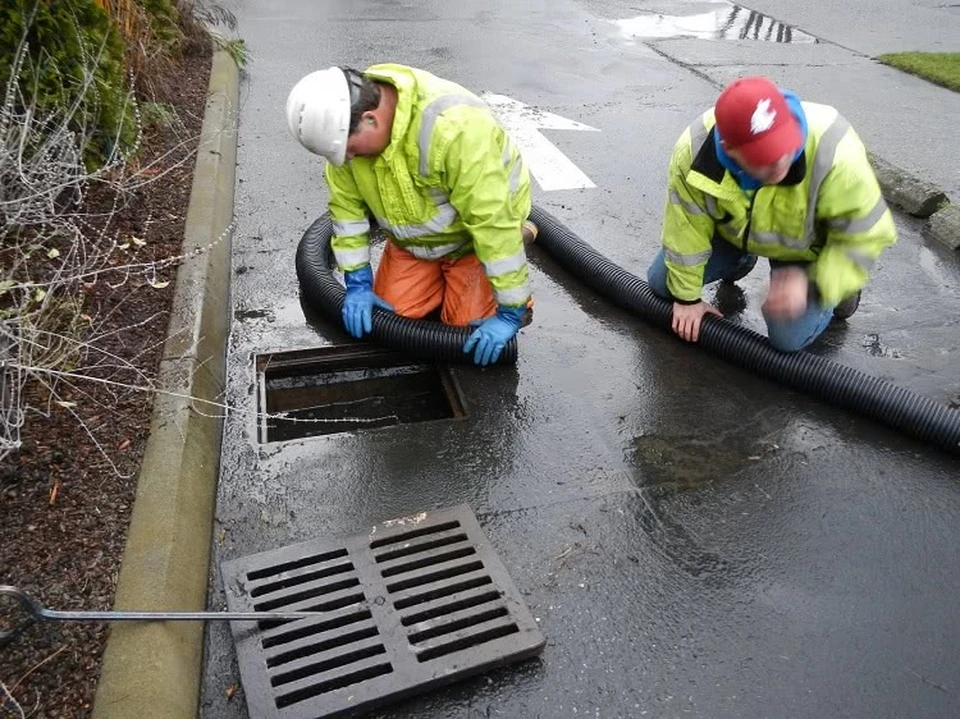Whether you’re dealing with a soggy lawn or water creeping into your basement, having the right systems in place can mean the difference between a dry, well-maintained property and a water-damaged nightmare.
Picture this: You step outside after a heavy rainstorm, only to find your yard transformed into a miniature swamp. Puddles are everywhere, your basement smells like mildew, and your driveway is showing early signs of erosion. Sound familiar? If so, you’re not alone! Poor drainage can wreak havoc on your home, leading to costly repairs, foundation damage, and even potential health hazards from mold growth.
That’s why tackling water flow around your property is so important. Whether you’re dealing with a soggy lawn or water creeping into your basement, having the right systems in place can mean the difference between a dry, well-maintained property and a water-damaged nightmare.
In this guide, we’ll break down the best methods to protect your property from excess water. From simple DIY fixes to professional-grade setups, we’ll cover it all—so grab a coffee, get comfy, and let’s dive in!
Signs You Need Better Drainage
Before we get into the nuts and bolts of effective drainage solutions, let’s first pinpoint the telltale signs that your property has a drainage issue. If you spot any of the following, it’s time to act:
- Standing Water – Puddles that linger for days after a rainstorm signal poor drainage.
- Water Stains in the Basement – Dark streaks or damp spots on basement walls mean water is seeping in.
- Cracked Foundation – Over time, water pooling around your home can weaken the foundation, leading to cracks.
- Muddy or Eroded Landscaping – If your yard looks more like a swamp than a lawn, your drainage system needs an upgrade.
- Mosquito Infestations – Standing water is a breeding ground for these pesky insects.
Ignoring these warning signs can lead to bigger (and pricier) problems down the road. But don’t worry—there are plenty of methods to help you take control of water flow around your property.
Types of Water Control Systems for Your Home
1. French Drains: The Gold Standard
A French drain is one of the most effective methods for preventing water buildup around your home. This system involves a perforated pipe buried in a trench, surrounded by gravel. As water seeps into the trench, it gets redirected away from your house, keeping your foundation safe and dry.
Why homeowners love it:
- Keeps basements dry
- Prevents soil erosion
- Long-lasting and low-maintenance
If you’ve got excess water pooling around your foundation, a French drain is a solid investment!
Keeping Your Yard Dry
When it comes to managing water around your home, not all yards are created equal. Depending on your landscape, you might need a combination of methods to keep things dry and damage-free. Here are a few common options:
Catch Basins
Think of these as underground reservoirs that collect water and channel it to a drainage system. They’re great for handling heavy rainfalls.
Dry Wells
A dry well absorbs excess water and slowly releases it into the soil. Ideal for areas prone to puddling.
Gutter Extensions
Simple but effective, gutter extensions prevent rainwater from pooling near your home’s foundation.
Each of these residential drainage systems tackles different water-related challenges, so choosing the right one depends on your specific needs.
3. Downspout Drainage: Directing Water Where It Belongs
Your gutters do a great job of collecting rainwater—but where does all that water go? If your downspouts dump water right next to your foundation, you’re asking for trouble!
Solution: Extend your downspouts with drainage pipes to redirect water at least six feet away from your home. You can even connect them to a French drain for extra protection.
4. Swales: A Natural Approach
Swales are shallow, sloped channels that guide rainwater away from your home. Lined with grass, gravel, or stones, they provide a natural, aesthetically pleasing way to manage excess water.
Why they’re great:
- Prevent soil erosion
- Require minimal maintenance
- Blend seamlessly into landscaping
If you prefer an eco-friendly approach, a swale might be the perfect fit for your yard.
5. Sump Pumps: Your Last Line of Defense
If you’ve ever dealt with a flooded basement, you know how devastating water damage can be. That’s where a sump pump comes in!
This handy device sits in a pit (or sump basin) in your basement or crawlspace. When water levels rise, the pump activates and directs excess water away from your home. It’s a must-have for properties prone to heavy rainfall or high water tables.
Types of Sump Pumps:
- Submersible Pumps – Installed inside the sump basin and operate quietly.
- Pedestal Pumps – Positioned above the water level, making them easier to maintain.
- Battery-Backup Pumps – Essential for keeping water at bay during power outages.
Investing in a sump pump could save you thousands in water damage repairs down the road!
Wrap-up
If you’re ready to take the next step, Myers Mulching and Dirt Work is here to help! Their team specializes in residential water control systems, ensuring your yard stays dry and damage-free. Don’t wait until water wreaks havoc—contact Myers Mulching and Dirt Work today for expert assistance!
FAQ’s
Q1. How do I know if my home needs a drainage system?
A: If you notice standing water, a damp basement, or soil erosion, your home could benefit from a drainage system. Acting early can prevent costly damage!
Q2. Are French drains expensive?
A: French drains vary in price depending on length and installation complexity. DIY versions can cost a few hundred dollars, while professional systems may run into the thousands—but they’re worth every penny!
Q3. Can I improve my yard’s drainage without digging?
A: Absolutely! Simple solutions like adding gravel, aerating your soil, or extending downspouts can make a noticeable difference.



